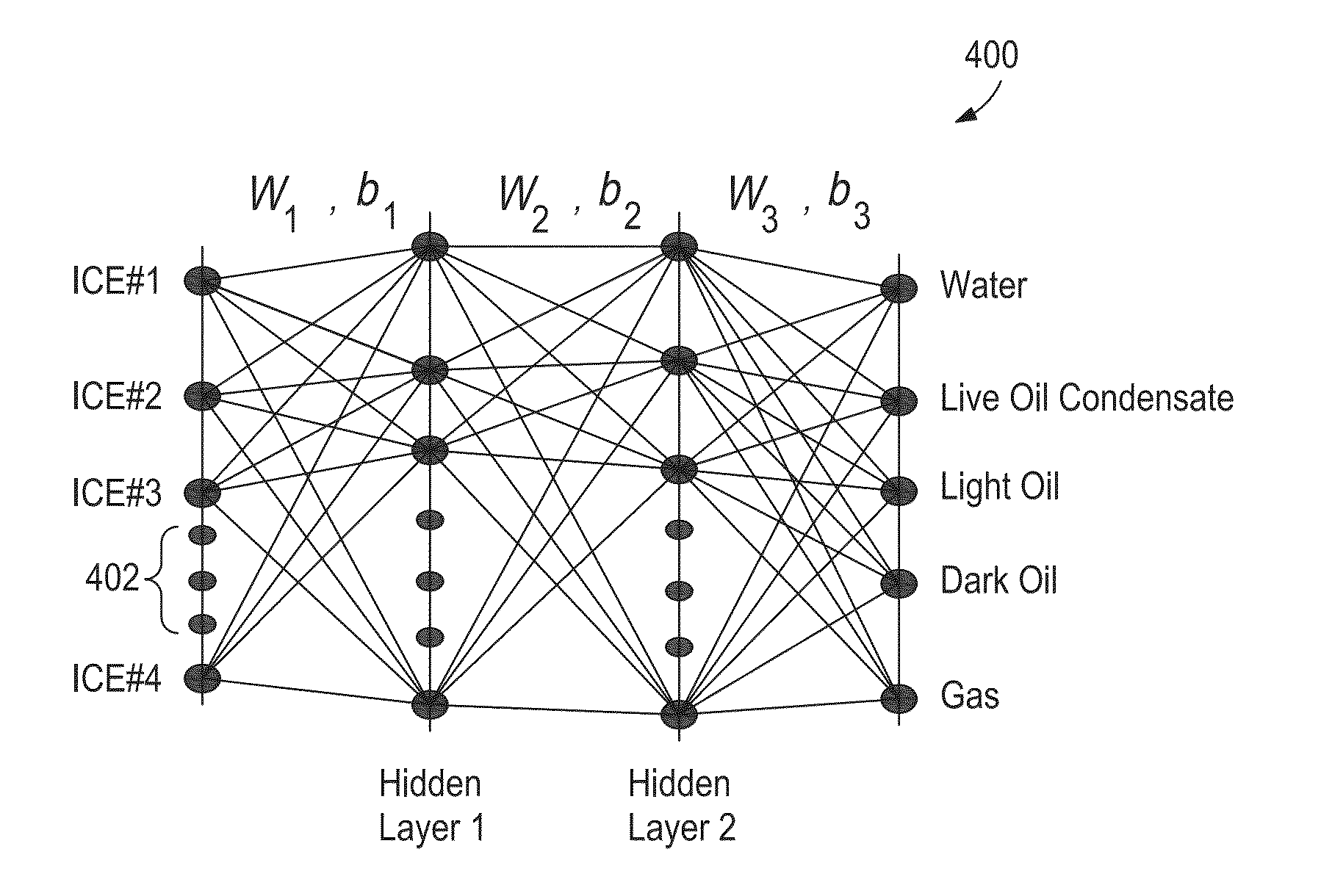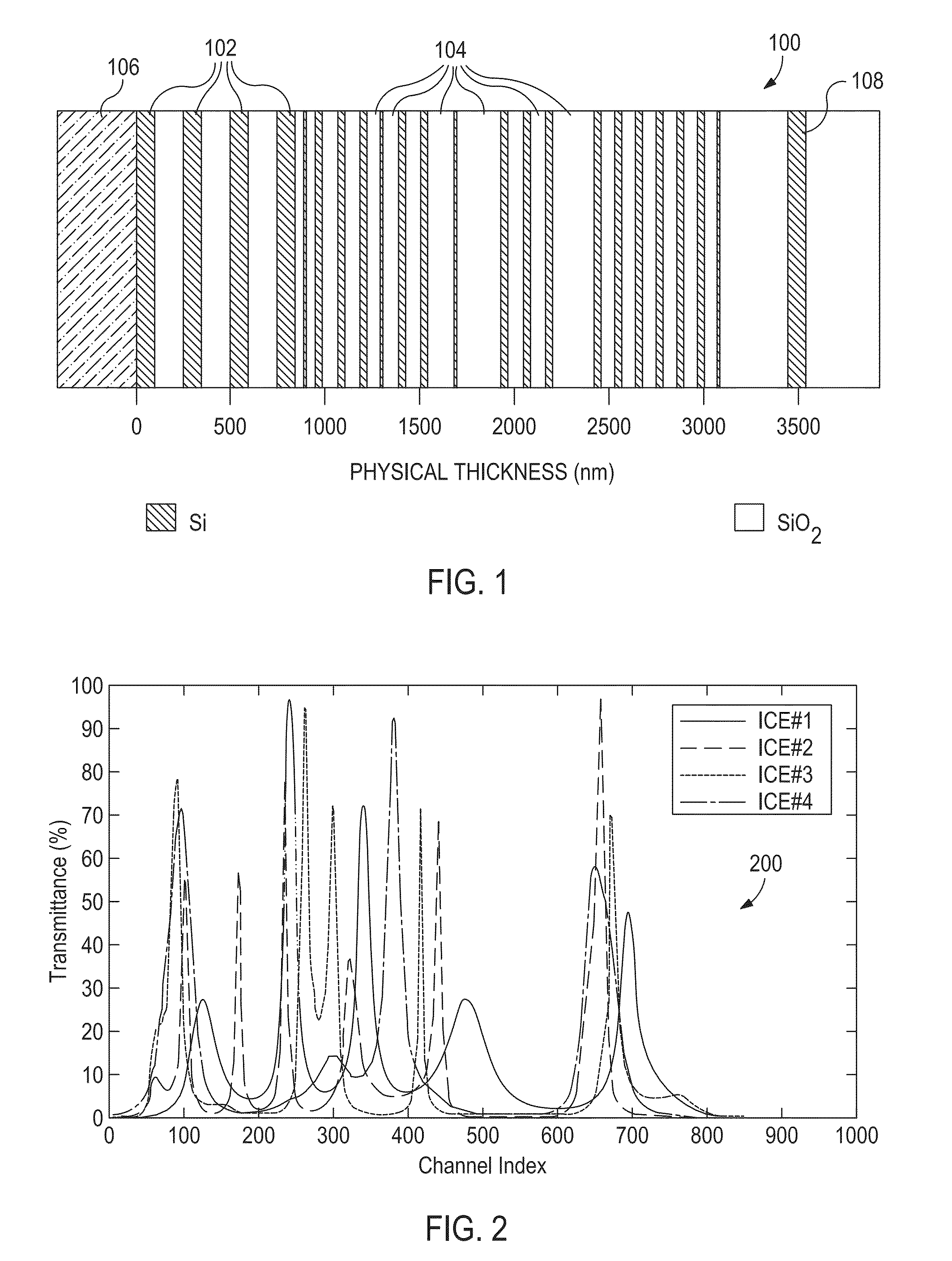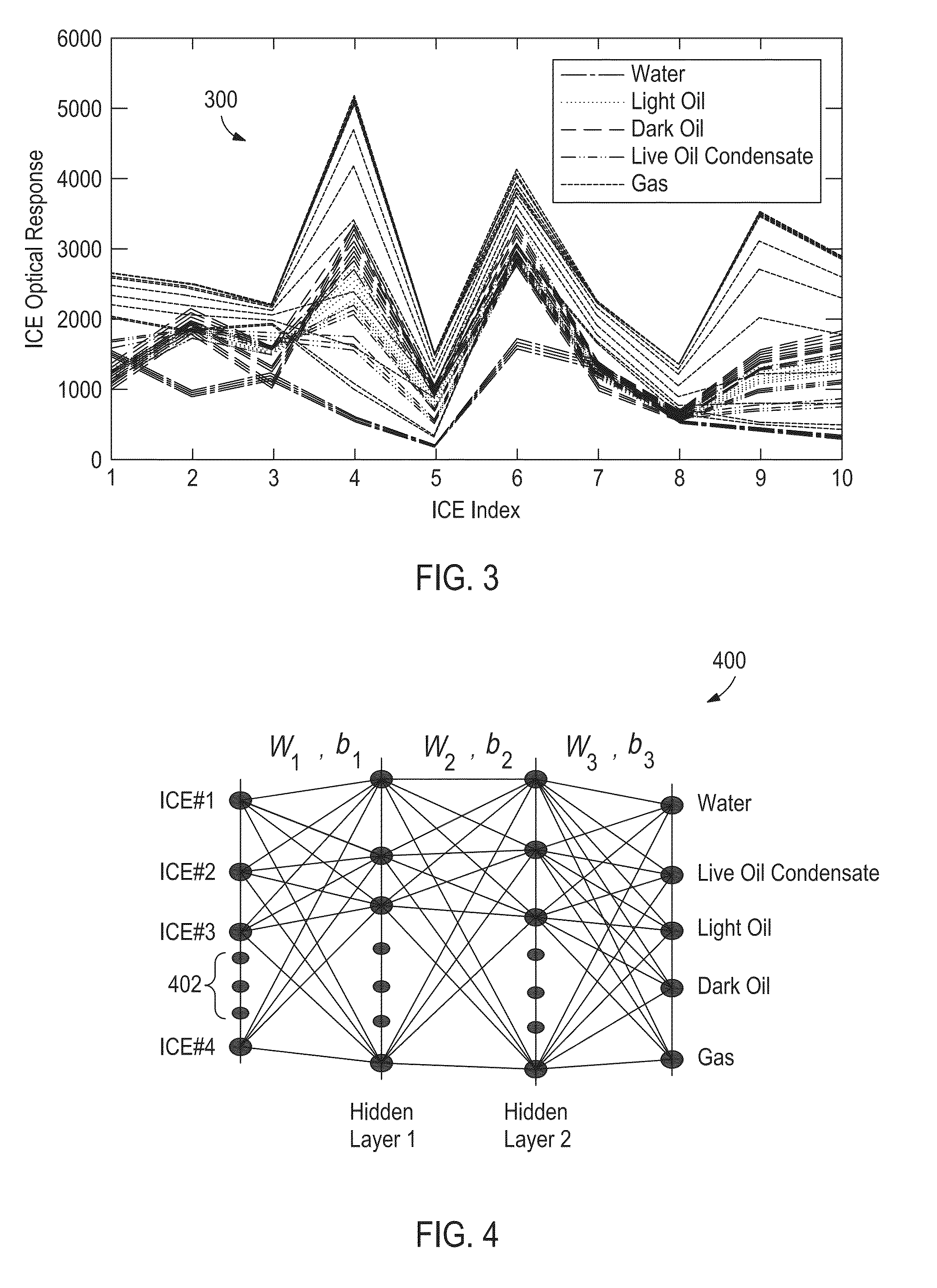Discrimination Analysis Used with Optical Computing Devices
a technology of optical computing and discrimination analysis, applied in the field of optical computing devices, can solve the problems of retrospective analysis being unsatisfactory for accurate determination of fluid characteristics, unable to accurately determine the true chemical composition or characteristic of the sample, and taking hours to complete,
- Summary
- Abstract
- Description
- Claims
- Application Information
AI Technical Summary
Benefits of technology
Problems solved by technology
Method used
Image
Examples
Embodiment Construction
[0017]The present invention relates to optical computing devices and, more particularly, to using discriminant analysis techniques and processing with optical computing devices in order to reduce the time required for determination of chemical and / or physical properties of a substance.
[0018]The present disclosure discusses the use of optical computing devices, also referred to as “opticoanalytical devices,” for the real-time or near real-time monitoring of a substance, or a sample of a substance. Exemplary optical computing devices receive an input of electromagnetic radiation associated with a substance and produce an output of electromagnetic radiation from an optical element arranged within the optical computing device. The optical element may be, for example, an integrated computational element (ICE), also known as a multivariate optical element (MOE). The electromagnetic radiation that optically interacts with the processing element is changed so as to be readable by a detector...
PUM
 Login to View More
Login to View More Abstract
Description
Claims
Application Information
 Login to View More
Login to View More - R&D
- Intellectual Property
- Life Sciences
- Materials
- Tech Scout
- Unparalleled Data Quality
- Higher Quality Content
- 60% Fewer Hallucinations
Browse by: Latest US Patents, China's latest patents, Technical Efficacy Thesaurus, Application Domain, Technology Topic, Popular Technical Reports.
© 2025 PatSnap. All rights reserved.Legal|Privacy policy|Modern Slavery Act Transparency Statement|Sitemap|About US| Contact US: help@patsnap.com



